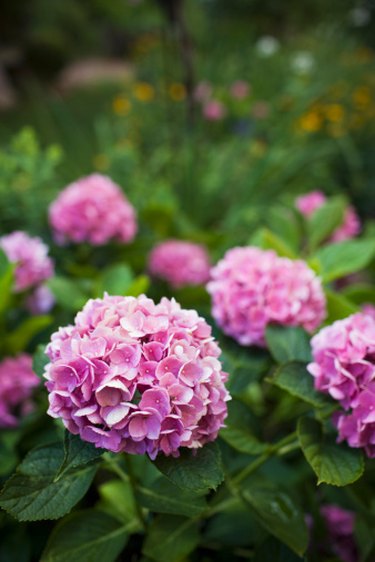Things You'll Need
Bleach
Measuring tablespoon
Sponge
Pruning shears
Plastic bag

Leaf spots on a hydrangea are caused by the fungal infection cercospora. Cercospora Leaf Spot typically appears in late summer and fall. The disease rarely kills hydrangea plants, but it can cause leaves to drop and look unsightly. The fungus spreads through spores that grow on fallen hydrangea leaves. For this reason, leaf spot occurs most often in low-maintenance landscapes. Because the disease occurs late in the hydrangea growing season, you do not need to use an antifungal spray to treat leaf spot.
Step 1
Mix a solution containing 1 tbsp. bleach and 9 tbsp. water. Soak the solution into a sponge. Use this sponge to clean your shears in between each cut that you make on your hydrangea to prevent the spread of fungal disease.
Video of the Day
Step 2
Clip off any leaves that show signs of leaf spot. This will prevent the fungus from propagating through fallen leaves.
Step 3
Place infected leaves in a bag to prevent them from spreading the fungus. Carry them well away from hydrangeas to dispose of them.
Step 4
Burn infected hydrangea leaves if your local city ordinances will allow it. In late summer when drought conditions occur, many cities enact burn bans. If you cannot burn leaves, dispose of them in the trash. Do not allow leaves to be taken to your city compost. This can cause the fungus to spread.
Tip
Although a fungicide is not required for treating hydrangeas, you can use it to treat highly valued plants that have reoccurring outbreaks from year to year. Treat hydrangeas in early summer with fungicide to prevent leaf spot from occurring.
Video of the Day